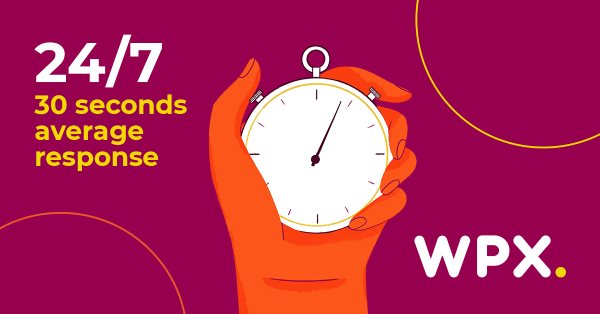
Assisting community members to profit by contributing to their communities is something that is very important to me and also has the potential for growth, making local PPC a subject that I hold close to my heart.
There are both correct and incorrect ways to utilize a PPC budget, whether it is for small and medium-sized businesses generating leads for their owner-operated store or for a national brand following the trends of a specific location and other scenarios in between.
1. Claim Your Local Listings
Over the years, Google My Business (GMB) has gone through significant changes. Allowing a disgruntled individual to cause damage to your brand through your local listing not only results in poor branding but also prevents you from benefiting from a potent SEO/PPC marketing tool.
GMB provides you with the ability to:
- Monitor and respond to reviews about your business.
- Share promotions.
- Unlock placements on the search engine result page (SERP).
The information obtained from GMB is used to determine ad placements and includes reviews. Although GMBs must have a physical address (P.O. boxes are not allowed), some businesses choose to use their home address or main office, while others decide not to have a GMB.
To claim your location, you need to ask for a post-card containing a distinctive code (typically received in 10-15 days). It should be emphasized that including location extensions in Microsoft Advertising does not necessitate a claimed listing.
2. Set Campaigns Up by Location vs. Service
When considering the options, it can be seen that there are advantages and disadvantages to each one. However, in the end, the decision on which structure to choose comes down to the following factors.
- Are all of your service areas the same?
- Are there distinct market indicators that require more budget allocation control?
If the locations you serve vary greatly in terms of market opportunity (such as affluence, demand, and other factors), it is advisable to tailor your campaigns to each local market and organize the ad groups based on your services.
If the services you provide have significant variations in margins, volume, and other factors that impact your ability to cater to customers, it is advisable to create campaigns that prioritize service. The ad groups will serve as different approaches through which these services can be accessed, enabling you to target specific audiences with your ad copy. In this particular situation, all locations will be grouped together within a single campaign.
Whether your GMB is claimed for each location is a significant determining factor (and whether it is possible to have one per location).
As previously stated, GMB provides options to expand your ad placements, extensions, and audience engagement. It is not possible to choose the specific location for Google to display your ads, therefore it is advisable to have only one GMB listing for each campaign.
3. Include Local Insider Knowledge in Creative
One thing that might seem obvious, but is quite disappointing, is how few businesses actually make use of their genuine local connections and understanding. Can you guess which of these two ads had better performance? Despite the second ad having some “personality”, it lacks a clear focus on local intent. Moreover, the location extension introduces inconsistencies regarding the location (Boston vs. Lynn).
While the initial advertisement may be considered uninteresting, it effectively indicates that it is associated with a business located in Boston. Incorporating genuine “local” information into the advertisement can create a sense of trust with potential customers, transforming them from weary browsers into enthusiastic prospects.
Below are some examples we have utilized with significant success.
- Orient the user with local landmarks and highways.
- Subtleties of local commutes (particularly important to layer device and schedule adjustments here).
- Local lingo (great fodder for headlines and extensions).
- Local seasonal activities (for example, if most apartment leases end around August 31, include references to that in creative).
4. Location Targeting by Profit Center
Valuing every location equally is not advisable, as it can lead to wasteful decisions by confusing actual worth with perceived worth.
Each location has varying auction prices. Although not all locations will have significant differences, a considerable number will exhibit variances of approximately $2-$3 higher or lower per click, as stated in WordStream’s most recent Google Ads Benchmark report.
The campaign will not be affected by minor price fluctuations, However, significant variations in auction prices when scaled (such as over hundreds or thousands of clicks) will result in cumulative costs for both you and Google/Microsoft/Facebook.
If budgets have a specific purpose, it is more likely that combining one location with high value (with higher average CPC) and another location with volume but lower quality leads (and probably lower average CPC) will result in a loss of impression share.
Access to budget should not be given to every location, either because it is already attracting a sufficient number of customers and cannot accommodate more, or because the cost for acquiring leads is not feasible considering conversion rates and profitability.
In certain cases, it is more logical to merge physically adjacent locations and conduct a unified, powerful campaign. Additionally, it is beneficial to bring together various locations into profit categories (high, average, and low) in order to allocate budgets according to the worth of each market.
By choosing this path, you cannot ensure that the budget will reach a particular location, but you will achieve better campaign performance.
5. Take a Look at Your Books
Every PPC budget has a maximum amount. For small or local businesses, that maximum amount is typically reached rapidly. Therefore, it is crucial to allocate funds solely to our most profitable products or services. This is a fundamental principle that we sometimes neglect by promoting all of our services instead of concentrating on the most lucrative ones for our PPC campaigns.
Make sure to take a moment to call your accountant and ensure that the books are arranged in a way that allows for identifying the products or services that are generating the highest revenue, as well as the highest profit.
6. Hey Google Search Console, Meet PPC
If you have been running an SEO campaign, examine your top-performing keywords to identify which searches generate the highest number of impressions.
To begin, make use of Google Search Console (formerly Google Webmaster Tools) to discover the keywords that are receiving the most impressions. Then, cross-reference these terms with the content of your books. In the event that a keyword generates numerous impressions, represents a profitable service or product, but does not yield clicks, it may be prudent to create a dedicated ad group for that particular term.
The focus is on search engine positioning rather than solely on search engine optimization.
7. Ad Groups and Copy Based on Cities
There are numerous methods for structuring your PPC campaign, but we have discovered that the greater the local relevance of your ad groups and copy, the higher the quality. For instance, if you operate a local company in Orange County, CA, and have a restricted budget.
In order to maximize your spending’s effectiveness, the typical approach is to devise a campaign for Orange County, and subsequently establish an ad group for each specific set of keywords. This allows you to concentrate your efforts on the entirety of the county.
What if you could develop a campaign for each city where you currently conduct the most business? By adopting this approach, we would create a campaign exclusively for Irvine, and within each ad group, we would include city-specific keywords and ads. The aim is to ensure maximum local relevance in our advertising efforts.
What are the implications for you? Increased Quality Scores, increased click-through rates, and increased conversion rates.
8. Make Call Outs and Site Links Local
Ad extensions are an effective method to increase the visibility of your advertisement and improve conversion rates. However, many local businesses solely depend on displaying their address or phone number extension to showcase their local presence.
To enhance our ad extensions and take advantage of being local, let’s follow a step-by-step process. First, let’s include our location in both our callout extensions and site links, in addition to our area code and address. Then, we can personalize each extension for the specific city ad groups we recently formed.
9. Zip Code in the Ad Copy and Display URL
Adding your zip code is a great way to enhance your ad and make it standout, especially when combined with numbers. As a plastic surgeon based in Beverly Hills, imagine the impact of including the prestigious 90210 zip code in your advertisement. It showcases that you are precisely the surgeon individuals are seeking.
One effective way to include your ZIP code or city name is by incorporating it in both the text and the display URL.
10. Talk About Stuff Only Locals Know
If you truly want to be considered local, express it through your language. When trying to connect with the surfing community in San Clemente, CA, avoid generic terms like beach, ocean, water, etc. Instead, refer to specific local spots like SanO, Trestles, T-Street, or Lost Winds.
If you are unfamiliar with any of those terms or their meanings, that’s great because you are not the intended audience. Besides mentioning the cost in your advertisement, there are other ways to avoid irrelevant clicks. Your intended audience has its own unique language and phrases. Acknowledge this and craft your copy in a way that connects with your community.





